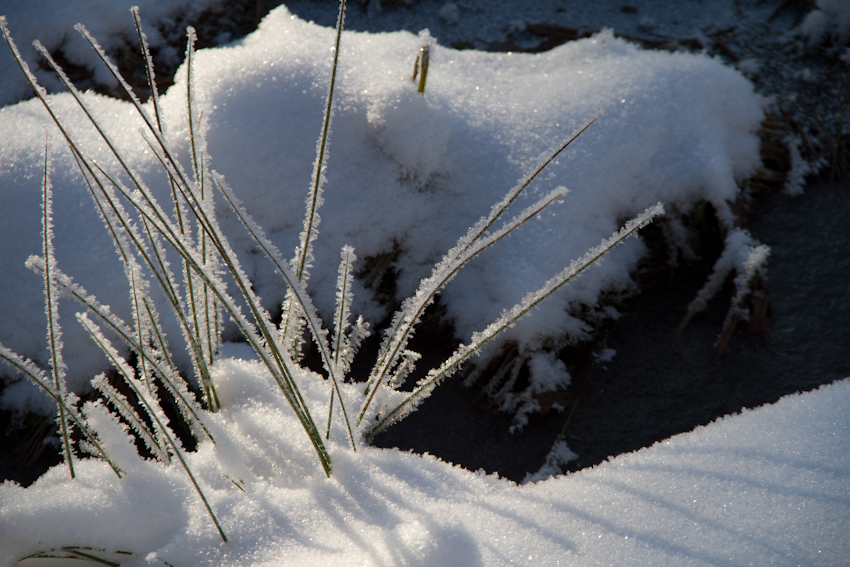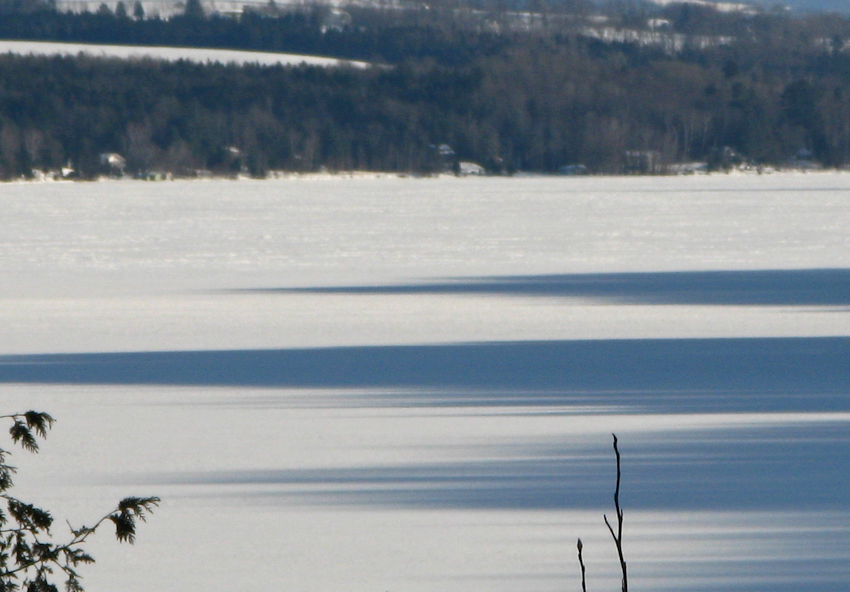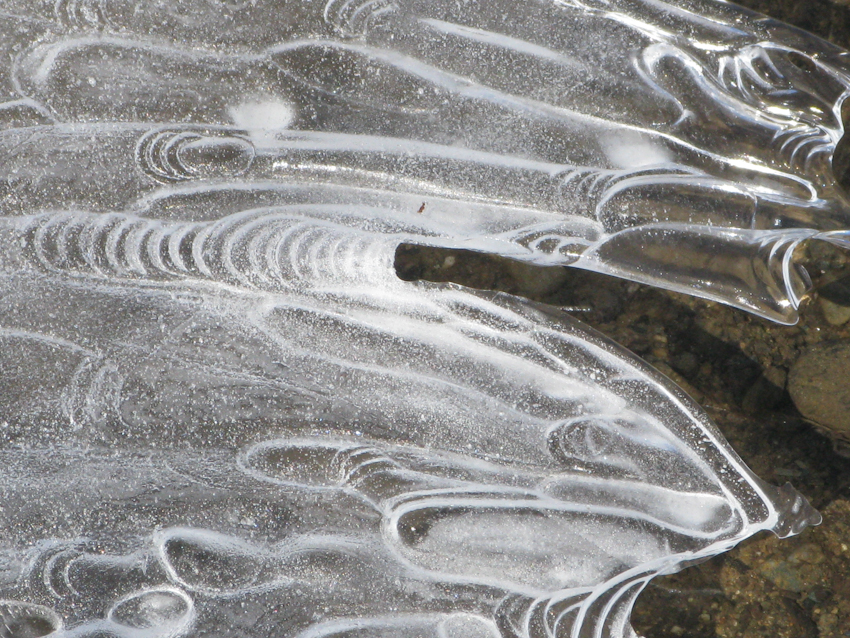When I first began gardening,, I thought that Quebec’s winter landscape could offer nothing of interest. Now I realize that I only needed to train my eye to see things differently. Instead of looking to plants for interest, I needed to look for patterns and details.
Details like the sun-sparkled fuzz of snow that coated a clump of grass beside the driveway.
Patterns like the wavy black line drawn by the not-yet-frozen stream as it crossed the meadow.

The stream running through the meadow creates a wavy black line, a strong contrast to the white snow.
Corn stubble that broke a farm field into rows and brought a touch of gold to the black and white world.
I needed to use my imagination to see beyond the obvious. Shadows on the frozen lake shaped like cathedral spires suggested a hidden country, just beyond the camera’s reach.
Ice on the pond became fish with perfectly frozen scales and eyes in just the right place.
By the house, Calamagrostis brachytricha became a feather duster, delicately gathering snow.
Ornamental grasses by the Skating Pond offered more conventional ‘winter interest,’ particularly early in the season before the snow beat them flat.

Miscanthus sinensis ‘Malepartus’ stands tall beside the Skating Pond. They have grown much larger now and the clumps are no longer as easy to distinguish, one from the other.
All these views I came to look for, and to love. Without doubt, though, my favourite piece of ‘winter interest’ remains the grass snake. The white coat the snake wears hides his red eyes and tongue, but the red apple remains visible. And as always, it is just out of reach.

The grass we install every spring grows over the summer months to become a shaggy skin. That ‘skin’ will be shed in the spring when we install a new grass coat.
Dead grass — or plants of any kind — aren’t the only things that provide winter interest in the garden. I’ll be writing more about this in the next week or so. And I’ll share an idea you may want to imitate: a wonderfully simple structure that can add colour, humour and intrigue to a garden of any size, in any season.












Love it and I can hear your footsteps in the snow!
Crunch, crunch… more snow today. Gorgeous.
Hard to beat corn stubble in the snow.
The corn stubble is now totally covered — only a sheet of white. But the trees overhead are ice crystals, shining in the sunlight, drawing my eye upwards. Quite beautiful.
Thanks for the reminder to be more perceptive. There’s always something amazing to see if we’re aware and observant.
I so agree with you, Beth. Taking the time to observe isn’t always easy, particularly when the temperatures drop to -15C or lower. But it is worth it.
I do hate the term ‘interest’ about gardens. It seems so very odd and hardly apposite really. (Must get behind this someday) And ‘winter interest’ is one of the worst – in the UK it means bright coloured shrub stems in quantity and anything else that can be found which is at all garish. In fact – I feel a blog post of my own coming on.
But your kind of interest is after my own heart. That is a winter to be reckoned with and seen (photographed) by a superb eye. What a relief, eh?!!
Xxx Anne
You’ll find yourself quoted in this week’s blog post, Anne. As usual, your comments made me think.